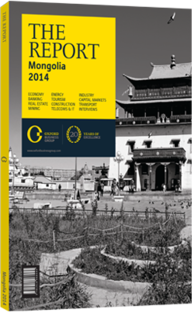Mush!: Dog sledding is becoming an important way to draw tourists in winter
The tourist season in Mongolia has always run from April through October. The country’s harsh winter climate is a big obstacle for tourism to be able to operate at a profit throughout the year, making it a seasonal sector. The challenge has therefore been to attract tourists in the months of November through March. It is not easy to lure vacationers to a place where the average daytime temperature is around -13°C.
Nevertheless, some try. There are today a number of tourist activities that one can enjoy during the winter in Mongolia, when the temperatures can drop at times to -40°C or even -50°C. Besides the traditions of horseback riding, camel riding and archery, there is the prospect of enjoying Mongolia’s pleasant winter landscape while dog sledding. Since the mid-2000s, when the country’s economic development really got going, this activity has become ever more popular among tourists and expats in the country. Not least, it has become an important additional source of winter revenue for families in the countryside.
Adventurers
Today, there are a number of tourist agencies offering excursions outside the cities for days or even weeks, some to national parks close to Ulaanbaatar, such as Terelj or Khustai, and others further away. Such trips now often include dog sledding in winter: it all depends on the type of trip one is looking for. In general, tourist agencies adapt quite well to clients’ requests. Prices also vary greatly depending on the length of trip, distance covered and agency chosen. The options, fees and possibilities are very wide-ranging. Trips are usually made in groups.
There are still many obstacles to developing winter activities in the country. One is getting tourists to venture outside the cities. While dog sledding is helping in this regard, the typical foreign tourist, who may have come from as far away as Europe or the US, is not so much looking for this type of adventurous activity. Most of such visitors to Mongolia prefer to come in the summertime, relax and enjoy the beauty of nature and tranquillity that is present all around.
Origins
Sleds are pulled by several dogs at once and harnessed together in pairs, a set-up originally used to travel over ice and through snow. Various types of sleds are used, depending on their function, and, while they may be used for racing, in Mongolia their most common use is as an activity for tourists.
While in certain parts of the world dog power has been used traditionally for hunting and travel for over a thousand years, contributing much to human culture and development, this has not been the case in Mongolia. The nomads of its vast plains and steppes normally travelled on horse, as these animals provided a greater speed of travel.
The main breeds of dog used to pull the sleds are Siberian Huskies or Alaskan Malamutes, due to their resistance to harsh climates. In Mongolia, due to its close proximity to Siberia, the former are mainly used for this activity. In other parts of the world, Alaskan Malamutes are more common as sled dogs.
Public Support
Both the private and public sectors need to do more to boost tourist activities, especially those carried out during the winter season. The government is aware of the limitations of seasonal tourism in the country and is taking decisive steps to develop a stable tourism sector throughout the year. Mongolia is also looking to boost tourist arrivals in coming years. In this regard, it has recently signed an agreement to become the official partner country of ITB Berlin, the world’s leading travel trade show, in 2015. The goal of this agreement is to send a clear signal to the world that Mongolia is ready to share its natural, cultural and historical heritage with the world.
As for the private sector, finding new activities to offer to tourists, such as dog sledding, is helping the industry overcome obstacles like the extreme cold of winter and thus become more profitable year-round. With such developments under way, tourism in Mongolia is well-positioned to use its natural and cultural beauty to draw more foreigners and develop tourism into a larger contributor to the country’s economy.
You have reached the limit of premium articles you can view for free.
Choose from the options below to purchase print or digital editions of our Reports. You can also purchase a website subscription giving you unlimited access to all of our Reports online for 12 months.
If you have already purchased this Report or have a website subscription, please login to continue.

